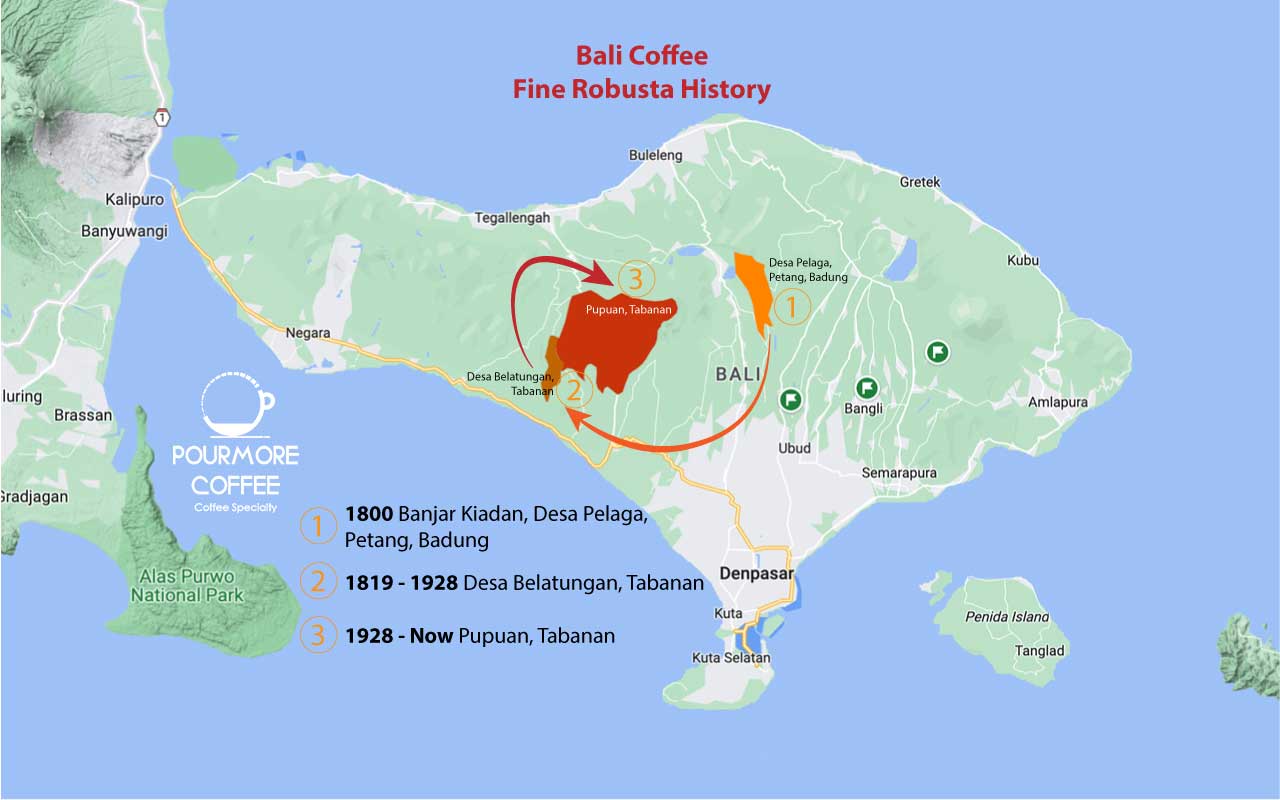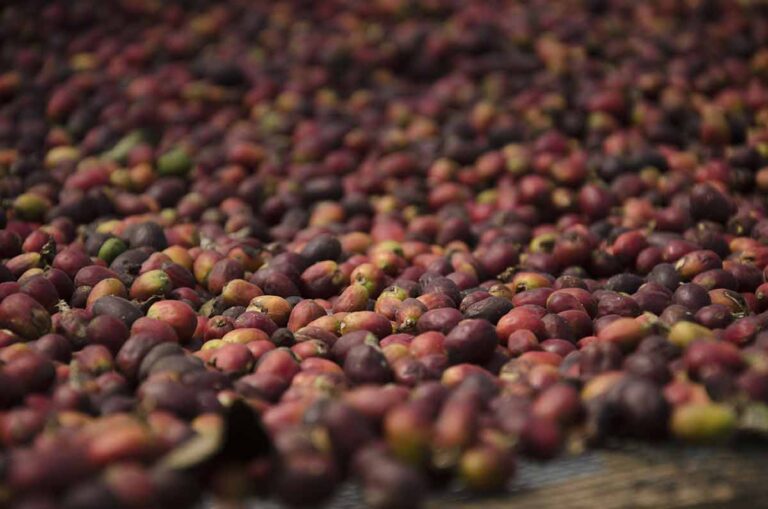Bali robusta coffee is one of the two types of coffee on this island of a thousand temples that complement the endless exoticism of this tiny paradise. In addition to Bali’s Arabica coffee, which has already captivated coffee lovers, Bali Robusta is starting to find a place for those who like their coffee relatively strong compared to Arabica.
History of Bali Robusta Coffee
In the era of Dutch colonialism in Indonesia, Bali was one of the mainstay Arabica coffee-producing areas in the coffee commodity trade. But around 1880 coffee plantations throughout the archipelago, including Bali, were hit by a leaf rust epidemic (Hemilia vastatrik) that destroyed this commodity.
To replace it, the Dutch tried to bring Liberica and Robusta (Canephor) coffee seeds from Java to be planted in the Banjar Kiadan area, Pelaga Village, Petang District, Badung Regency.
Pelaga Village has an altitude above 800 meters above sea level, apparently giving good robusta coffee yields. Although robusta coffee is identical to the type of coffee commonly grown at lower altitudes, the success of the robusta coffee planting experiment in Pelaga Village then began to be extended to other areas.
In 1819, robusta coffee was planted in Belatungan Village, Pupuan, Tabanan. Along with the self-initiated transmigration program held by the Dutch colonialists, robusta coffee began to be developed in a wider area. Until 1928, the entire Pupuan District, Tabanan, became the center of robusta coffee in Bali.
The conditions of the Pupuan area, with an altitude of 500–900 meters above sea level, a very wet climate category, 74–77% humidity, an air temperature of 24–30 °C, and good soil fertility conditions, apparently are ideal for robusta coffee plantations.
Even Pupuan robusta coffee has obtained a geographical indication certificate as fine robusta Pupuan coffee from the Ministry of Law and Human Rights (Kemenkum HAM). The certificate obtained in 2017 shows that Bali robusta Pupuan coffee has distinctive qualities and characteristics due to geographical conditions that cannot be found elsewhere.
Coffee Production
The latest data on robusta coffee production, quoted from the Central Bureau of Statistics (BPS), in 2022 amounted to more than 11,000 tons. The two main areas producing robusta coffee are Tabanan Regency and Buleleng Regency.
However, if detailed further, the harvest capacity of robusta coffee plantations in Bali is still below 700 kg/hectare. This is far below the ability of coffee plantations in Vietnam to produce 2.7 tons per hectare. This means that there is still an opportunity to increase Bali coffee production by improving its farming methods.




